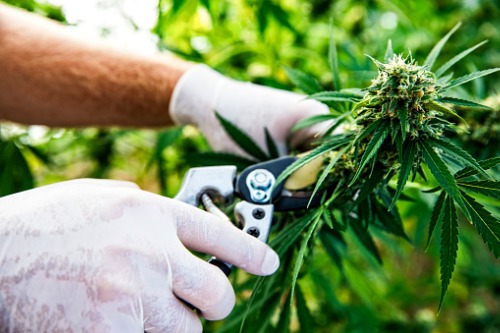

In 2018, sales of medical and recreational cannabis in the United States were nearly nine times higher than sales of Oreo cookies, according to a report from New Dawn Risk entitled, ‘Understanding and opening up the US cannabis insurance market’. Despite the significant demand – the US market saw an estimated $8 billion in legalized cannabis sales in 2018 – there are a few big problems blocking the way to further progress in the US cannabis industry.
One of those problems is insurance. According to the New Dawn Risk report, the legal US cannabis industry would pay about $1 billion in annual premiums if it were insured to levels normal for other businesses. But since the emergence of the industry, cannabis businesses have struggled to secure adequate coverage at sensible commercial prices.
“This is a huge market, with enormous potential,” said Max Carter, CEO of New Dawn Risk – a London, UK-based insurance intermediary with a focus on complex liability and other specialty insurance and reinsurance risks. “Legal cannabis sales are projected to rise to around $40 billion by 2025, which is just huge. The insurance industry should be supporting it; the legal cannabis industry needs insurance just as much as any other industry.
“But this is a very challenging environment. The insurance market – particularly the larger US property & casualty insurers – have really been spooked by the fact that the federal government’s position on legal cannabis has been fairly robust. Although they haven’t been pursuing any prosecutions, it’s very clear that the US government, at the federal level, still considers this to be an illegal activity. That’s really put off most of the major mainstream players on the P&C underwriting side.”
With only a limited number of suppliers, there’s not enough competition in the US legal cannabis insurance market to get market forces working at their optimum. Therefore, the price of insurance for cannabis businesses is far too high, and the quality of paper is limited, according to Carter. As a result, cannabis businesses are often unable to protect themselves against risks that are beyond their control, which is putting stress on their ability to access capital and develop the industry.
This is particularly tricky in the context of the COVID-19 pandemic. As Carter pointed out: “The crisis has exposed the financial pressures on many cannabis firms, with many venture capital-backed cannabis firms struggling already to meet financial projections. A COVID-19 recession […] will only increase such financial pressures for young cannabis businesses.
“The pandemic will make it even tougher for cannabis producers to obtain insurance as providers further tighten terms and conditions and introduce exclusions, while insurers who may have been looking to enter the marker will put their plans on hold. With the Federal Government shutdown and the possibility of a change of administration in November’s presidential election, the progress of legislation that would open up the cannabis market to insurers will be delayed. This reality fails to reflect the fact that many firms have significant insurance needs that are critical to help them manage the risks that exist in this young industry, with its untried legal and societal framework.”
In publishing the cannabis insurance report, the New Dawn Risk CEO hopes to flag these issues and encourage insurers to seek the burgeoning opportunities in the market.
“Again, it really all boils back down to the core fact which is that insurers are not comfortable operating in this space,” Carter told Insurance Business. “What we’re trying to do with this report is engage with the industry and get them to think about ways to come up with solutions that people will be comfortable in offering. This has to happen at multiple levels. Certainly, lobbying the industry bodies is going to continue to be an important part of this. Understanding the local state issues, how to operate in different states and avoiding some of the federal issues is also important. But whatever happens, the most important thing is that brokers, insurers and lawyers all come together and start having a proper conversation about it.”
